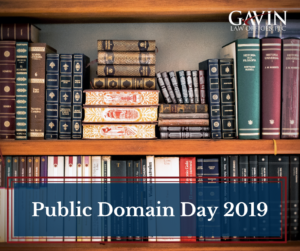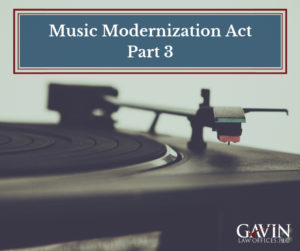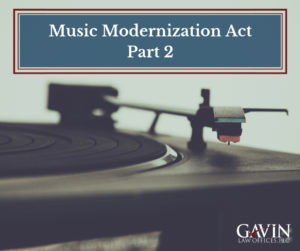When I was growing up, I, like many children, wore homemade costumes of my favorite characters for Halloween – saving my parents money versus the store-bought alternatives, but certainly costing my mother time. With a rise in intellectual property protection efforts by companies large and small in recent years, you may be wondering if your handmade creations might put you at risk for an infringement claim from one of the more over-zealous intellectual property enforcers (here’s looking at you, Disney). As a lawyer, I am nigh physically incapable of saying “have no fear,” but I think I’m comfortable with a reassuring “have very little fear!”
The four areas of intellectual property protection that could apply to a Halloween costume are publicity rights and trademark, copyright, and patent protection. I will address each in turn:
Publicity Rights
Should your costume include elements that could be used to identify a particular person, you may be violating such person’s publicity rights. For example, a costume of Albert Einstein was the subject of a publicity rights lawsuit in 2010. Publicity rights laws vary from state to state, and typically prevent unauthorized reproduction or use of a person’s likeness (which may include name, image, portrait, picture, signature, or other identifying elements) for commercial or advertising purposes. The purpose of such laws is to prevent unauthorized parties from trading off the likeness of others without fair compensation. Therefore, unless you plan on using your homemade costume in an advertising (e.g. in an advertisement for your small business) or commercial (e.g. manufacturing, producing, or selling your costumes) sense, you are likely not at risk for violating your costume subject’s publicity rights.
Trademark
Trademark owners have an affirmative duty to police their marks against unauthorized use by a third party. However, trademarks by their definition are used as source identifiers for goods or services being sold in commerce. Like the commercial and advertising aspects discussed above regarding publicity rights, trademark protection seeks to prevent parties from benefiting or trading off the trademarks of others for financial or reputational gain. Thus, recreating a protected design, logo, image, etc. in a homemade costume that will be used for personal use only (and likely for one night only), presents very minimal risk of liability for trademark infringement.
Copyright
Unlike publicity rights and trademark laws, federal copyright protection extends to any reproduction of a protected work. However, the Copyright Act specifically carves out exceptions for “fair use” reproductions. Surprisingly, Halloween costumes are not directly addressed; however, the statutory factors to be considered in determining whether or not a fair use exception applies include “the purpose and character of the use, including whether such use is of a commercial purpose;” and, “the effect of the use on the potential market for or value of the copyrighted work.” 17 U.S.C. § 107(1), (4). Again, the law focuses on commercial, rather than personal, use of the potentially infringing work. Also, practically speaking, damages in many copyright claims are based on lost profits to the copyright owner, meaning sales of the infringing work that should be attributed to the rightful copyright holder. Again, so long as your costume is made and used for your or your family’s personal use only, your use of the copyrighted material is very likely a “fair use.”
Patent
Patents prohibit any recreation of the patented design and, in general, apply to innovative designs. This may sometimes apply to costumes. For example, a patent exists for a costume that can be modified for comfort according to the outside temperature. The U.S. laws concerning patents also consider what are known as “design patents.” Design patents lack the exception of fair use but are only in effect for fourteen (14) years, and only protect unique and original designs separate and apart from a functional aspect of a costume. This mains that no one can have a patent on a purple suit, but could have a design patent on a distinctive and ornamental patterned suit. While it is unlikely that your recreated costume would run afoul of a design patent, the possibility is higher than in the other areas discussed above, particularly as there is no exception or commercial requirement. The practical risk is even lower, as patent owners are unlikely to be patrolling neighborhoods (outside of their own trick-or-treating efforts) looking for infringers. Furthermore, design patents are not the preferred method of protection in many cases, as the protection expires after a much shorter period (consider the fact that patent protection for designs is only 14 years, versus the “lifetime of author plus 75 years” protection applied to copyrights).
Conclusion
Avoid the urge to market, mass produce, and sell your wonderful homemade “wears” and devote the energy you may have used worrying about infringing on Marvel’s intellectual property to how many candy corns you can fit in your mouth at one time! This author is pro-candy corn, but if that offends you to your core, consider Skittles and/or M&Ms instead. Happy Halloween!
-Fred Freeman, Esq.

 Happy New Year, Gavin Law followers!
Happy New Year, Gavin Law followers! Concluding our coverage of the Music Modernization Act (MMA), this article explores the final Title III of the bill, the “Allocation for Music Products Act” or AMP Act. (To read more about the bill generally, visit the prior blogs
Concluding our coverage of the Music Modernization Act (MMA), this article explores the final Title III of the bill, the “Allocation for Music Products Act” or AMP Act. (To read more about the bill generally, visit the prior blogs  Continuing our coverage of the Music Modernization Act (MMA), this article explores Title II of the bill, the “Compensating Legacy Artists for their Songs, Service, and Important Contributions to Society Act” or CLASSICS Act. (To read more about the bill generally and Title I, please visit
Continuing our coverage of the Music Modernization Act (MMA), this article explores Title II of the bill, the “Compensating Legacy Artists for their Songs, Service, and Important Contributions to Society Act” or CLASSICS Act. (To read more about the bill generally and Title I, please visit